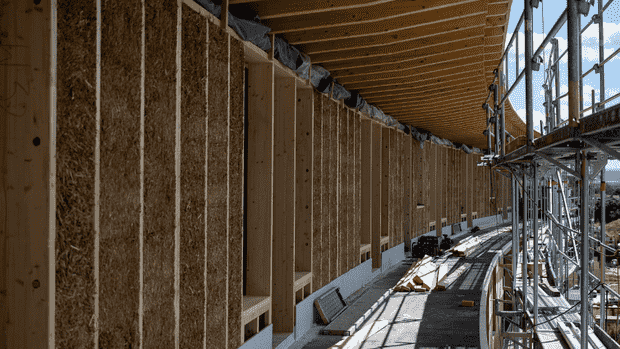If straw is used as a building material, it is no longer waste and, like wood, binds CO2 in the long term.
(Photo: dpa)
Buildings are commonly seen as CO2 emitters. After all, 30 percent of carbon dioxide (CO2) emissions in Germany are caused by the use of energy in houses. According to figures from the Federal Institute for Research on Building, Urban Affairs and Spatial Development (BBSR), a further seven percent of the emissions come from the manufacture of materials and the construction and demolition of buildings.
The fact that these CO2 emissions must be reduced is well known and stipulated in the Federal Government’s Climate Protection Act. But buildings have more potential when it comes to climate protection: They can become a CO2 sink if materials are used that store CO2 in the long term.
“In order to keep the climate stable and remove CO2 from the atmosphere, we have to get into negative emissions,” explained Anna Braune, Head of Research and Development at the German Sustainable Building Council (DGNB). “This can only be achieved through natural or technical CO2 sinks.”
In a panel discussion at the DGNB annual congress, experts showed how these can be created.
Read on now
Get access to this and every other article in the
Web and in our app free of charge for 4 weeks.
Further
Read on now
Get access to this and every other article in the
web and in our app.
Further
